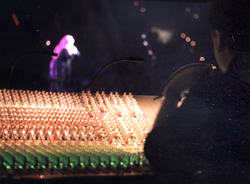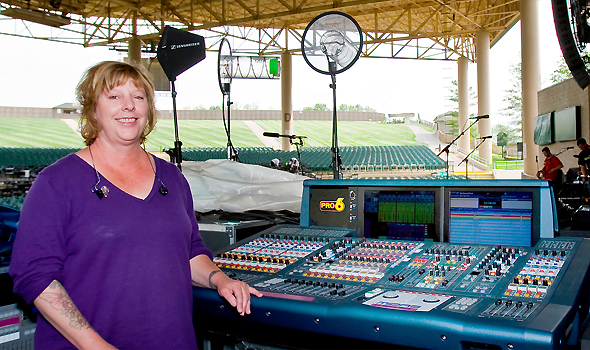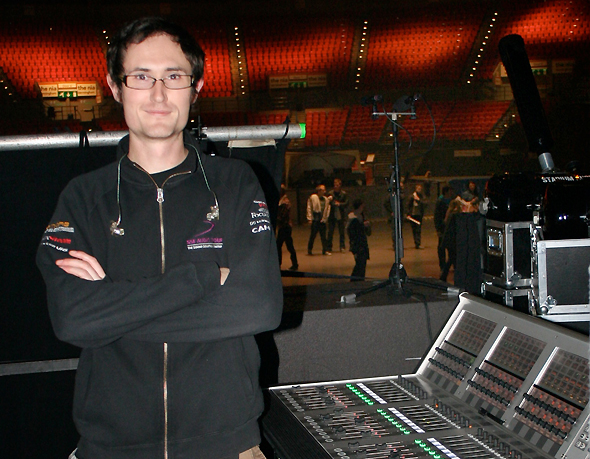
Karrie Keyes, Los Angeles
Current Gig: Pearl Jam
Other Artists: Red Hot Chili Peppers, Sonic Youth, Fugazi
Of all the engineers on our panel, Keyes, who’s worked with Pearl Jam since 1991, is the one who’s spent the longest getting to know her band’s needs.
“I wouldn’t say I’m doing anything that’s unique,” she says. “I am running the console pretty hot in terms of input gain and output level. The band had issues in past with other digital consoles, but when we switched to the Midas PRO6 they took to it immediately.” She’s since moved to a Midas PRO9 and says that the mix outs are pretty much full.
With the exception of drummer, Matt Cameron, the band uses a mixture of IEM, wedges and fills. “Matt relies solely on a drum fill and wears ear plugs,” Keyes explains. “There are extra mixes for guests and strings, and, in arenas, additional mixes behind the band for when they play to the back of the arena.”
In terms of outboard gear, Keyes uses the bare minimum. “No gates, no compressors, just two Lexicon PCM 60 reverbs.”
Her approach depends heavily on setting her console up as much like an analog desk as possible, and says that programming each song and every EQ and volume change simply isn’t viable. “The band has over 150 songs they pull from every night, and the set list changes so much that being able to do my cues manually is the fastest and best option.”
Having mixed the band for 20-plus years, she’s often able to anticipate the band’s needs, and says the PRO9’s POP Groups and VCAs have been helpful in creating a work surface that suits her needs more effectively. “The POP groups are a lifesaver. I set them up for each musician and I can access what they need fast without having to look for it, or taking my eyes of the band.”
Will Doyle, London
Current Gig: Arctic Monkeys
Doing monitors for this U.K.-based, indie-rock, four-piece doesn’t exactly stretch the capabilities of Doyle’s console of choice, the Soundcraft Vi6. As straight up as the band’s monitor system is – d&b M2 wedges, L-Acoustics ARCS and dV-SUBS as side fills, and three IEM mixes – Doyle’s incorporation of the Vi6’s VCAs into his user layer does helps streamline his workflow.
“I’ve only got a few cues during the show – not enough for me to start automating everything – but for the entire kit, for example, I can push one fader up, instead of nine,” he says, adding they he also mixes IEM for the band’s three techs.
The VCAs are ideal for keeping the relationship between the effects and dry vocals the same: “Another case of using one VCA fader instead of having to move two input faders. It means you can hide away channels you don’t change frequently on a different layer of the desk like overheads and reverbs, and group all the important stuff together on one user defined bank of faders. It’s also easier to snap back to normal levels after changing things for a certain song. Going back to 0 is quicker than trying to instantly go back to something a bit more specific like -12.”
Bottom line, like all the engineers we talked with, the prime objective that Doyle really wants to achieve with anything he’s doing at the console level is to free up more time to keep an eye on what the band needs, and it’s another reason he prefers the Vi6. “It feels like an analog console. I don’t like it when your hand’s moving a knob or fader at one side of the desk, and you’re looking at the screen a foot or two away and not at the band.”
Based in Toronto, Kevin Young is a freelance music and tech writer, professional musician and composer.


